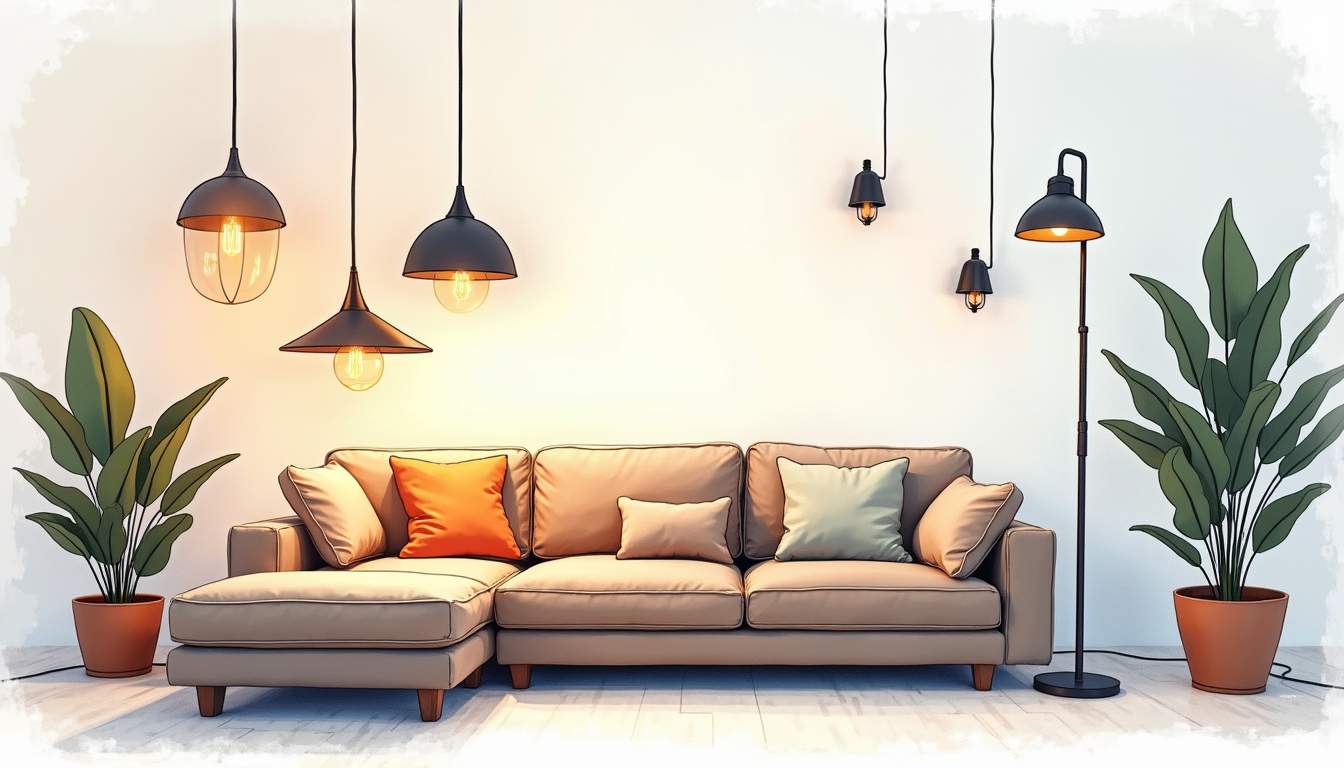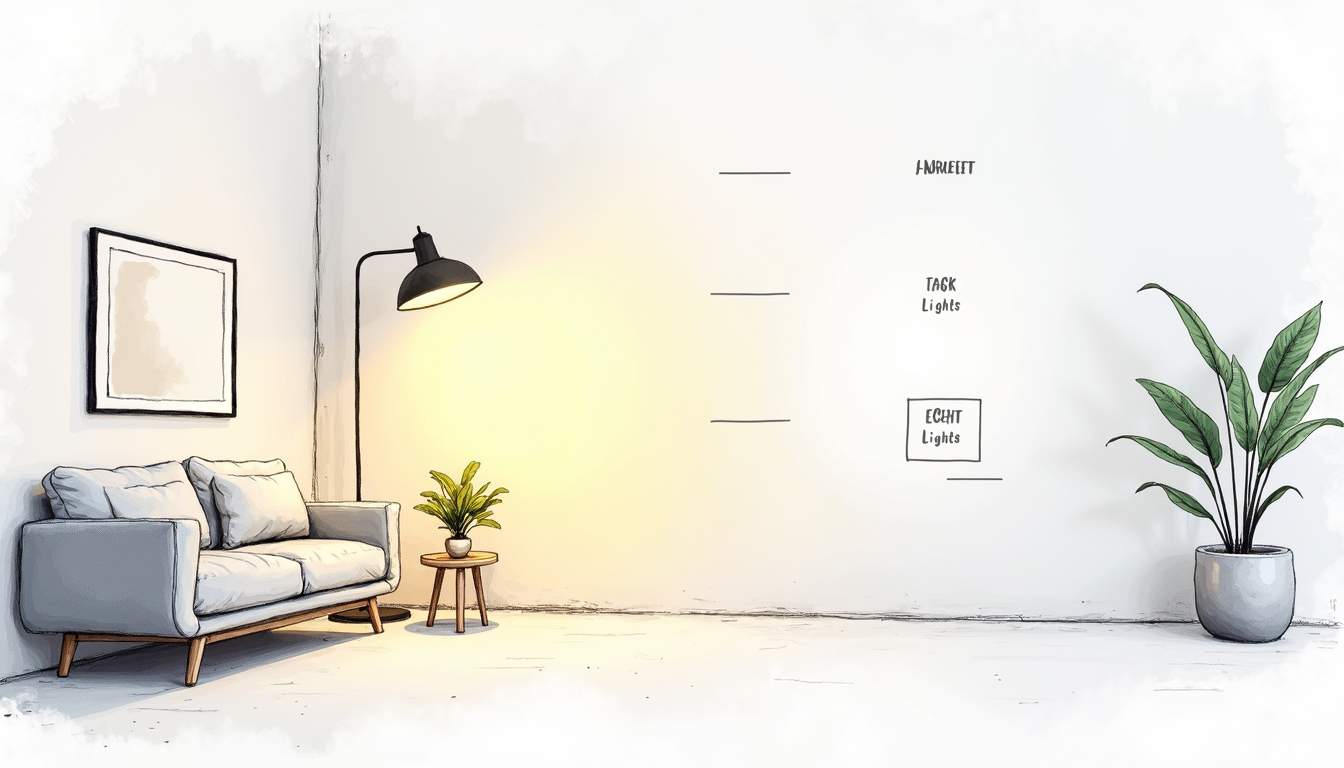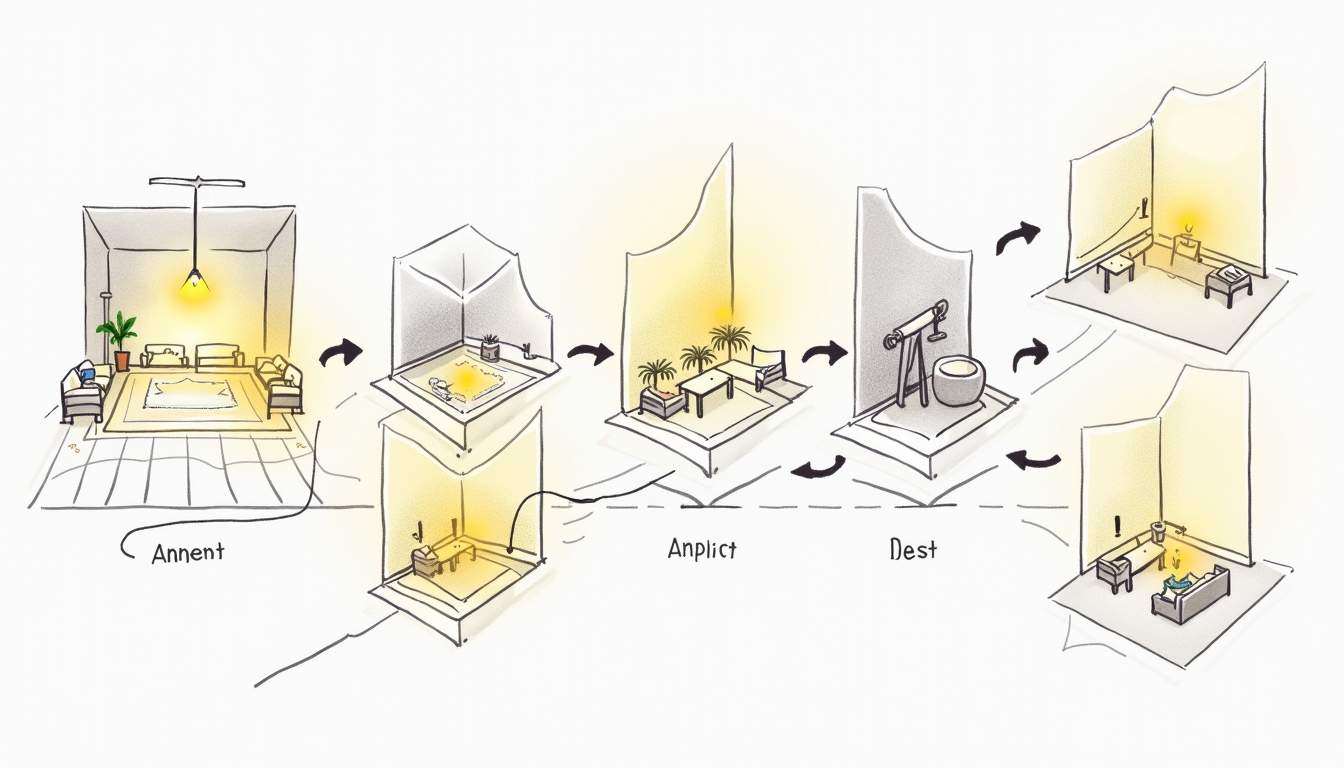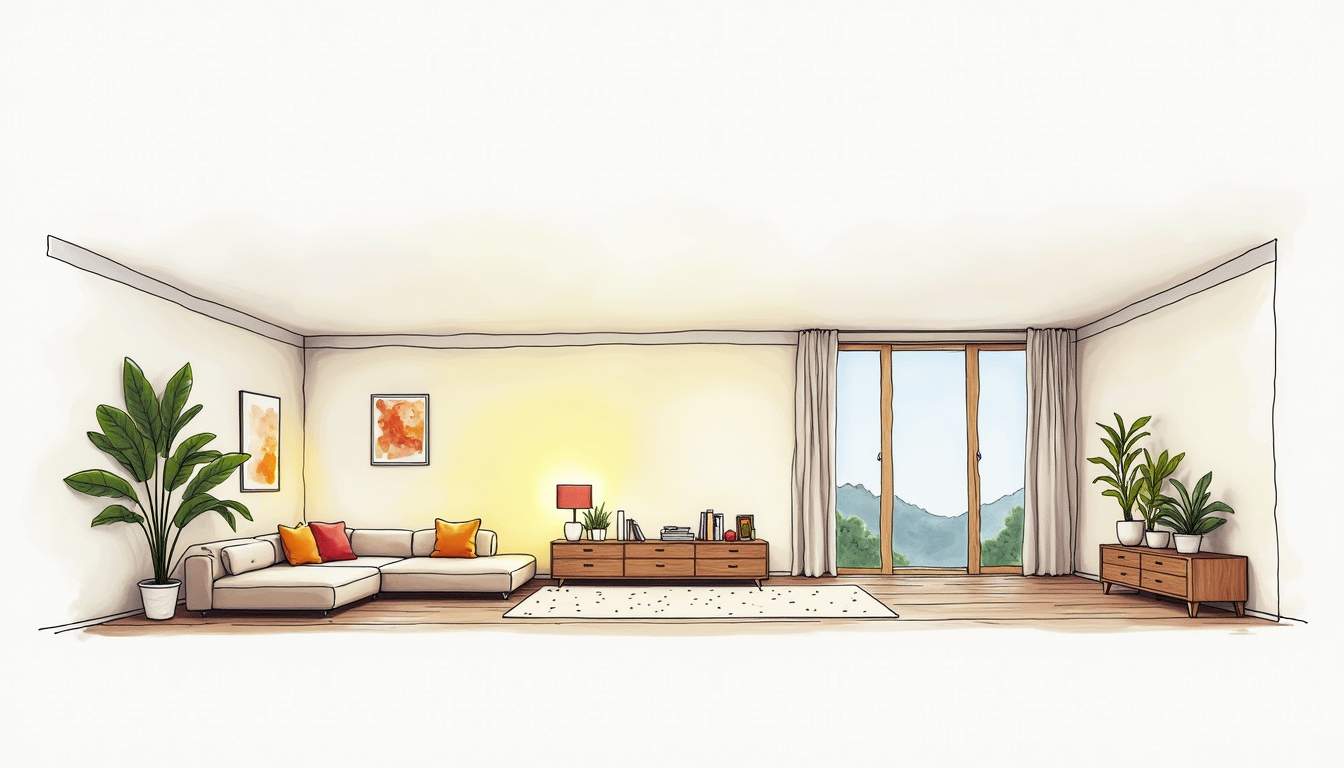LAYERED LIGHTING DESIGN

layered lighting design
Layered lighting design is a fundamental concept in interior design that enhances the functionality and aesthetics of any space. By understanding the layers of lighting, one can create an inviting atmosphere while also catering to specific tasks and activities. This article delves into the nuances of layered lighting, outlining its components, steps for implementation, and tips for execution.
Understanding the Concept of Layered Lighting
Layered lighting refers to the practice of using multiple sources of light to create a well-lit environment. This approach ensures that a space is illuminated in a versatile manner, meeting various needs while adding depth and visual interest. By combining different lighting techniques, designers can achieve a harmonious balance that enhances both functionality and aesthetics, making it an essential aspect of modern interior design.

Definition of Layered Lighting
At its core, layered lighting combines three primary types of lighting: ambient, task, and accent. Each layer serves a distinct purpose and contributes to the overall illumination strategy in a room. Ambient lighting provides the foundational glow that fills the space, while task lighting focuses on specific areas where activities such as reading or cooking take place. Accent lighting, on the other hand, is used to highlight particular features or objects, such as artwork or architectural details, creating visual focal points. By integrating these layers thoughtfully, designers can transform a space into a functional yet aesthetically pleasing environment, ensuring that every corner is both usable and inviting.
Importance of Layered Lighting in Interior Design
The importance of layered lighting cannot be overstated. It allows for flexibility in how a space feels at different times of the day and during various activities. A well-planned layered lighting scheme can enhance the character of a room, guide the eye, and even affect the mood of the inhabitants. Practical illumination, alongside artistic enhancement, creates an environment where individuals feel comfortable and inspired. Moreover, layered lighting can significantly improve the energy efficiency of a space. By utilizing dimmers and smart lighting solutions, homeowners can adjust the intensity of light according to their needs, reducing energy consumption while still enjoying a beautifully lit environment. This adaptability not only promotes sustainability but also contributes to a more personalized living experience.
In addition to its functional benefits, layered lighting plays a crucial role in defining the style and ambiance of a room. Different lighting fixtures, such as chandeliers, sconces, and floor lamps, can complement various design themes, from contemporary to rustic. The choice of light bulbs—whether warm or cool, LED or incandescent—also impacts the overall atmosphere. For instance, warm lighting can create a cozy and inviting feel, ideal for living rooms and bedrooms, while cooler tones may be more suitable for workspaces, promoting alertness and focus. By carefully selecting and positioning lighting elements, designers can craft a unique narrative within a space that resonates with the occupants’ lifestyle and preferences.
Elements of Layered Lighting Design
Understanding the primary elements of layered lighting is crucial for effective design. Each element plays a distinct role, and when combined, they facilitate a harmonious flow of light throughout the room.
Ambient Lighting
Ambient lighting is the foundational layer that serves as the general illumination for a space. It is often achieved through ceiling fixtures, chandeliers, or wall-mounted sconces. Ambient lighting sets the mood and comfort level of the room, ensuring that it is well-lit without being overly harsh.
In addition to fixtures, natural light sources should also be considered as part of the ambient layer. Windows, skylights, and open spaces can significantly enhance the overall lighting scheme, creating a more inviting atmosphere during daylight hours. The orientation of windows can also play a role; south-facing windows typically allow for more sunlight, which can warm up a space and reduce the need for artificial lighting during the day. Incorporating sheer curtains can help diffuse this natural light, softening its impact while still allowing for brightness.
Task Lighting
Task lighting is specifically designed for performing tasks that require more concentrated illumination. Examples include reading lamps next to a chair, under-cabinet lights in kitchens, or illuminated mirrors in bathrooms. The goal of task lighting is to provide sufficient light where it’s needed to prevent eye strain and ensure safety.
When selecting task lighting, consider the needs of the users in the space. This way, you can choose fixtures that not only provide adequate brightness but also offer adjustable features for maximum convenience. For instance, dimmable options can allow users to customize the intensity based on the time of day or the specific activity, whether it’s cooking, crafting, or working from home. Additionally, the color temperature of task lighting can influence productivity; cooler tones are often preferred for workspaces as they mimic daylight and can help maintain focus.
Accent Lighting
Accent lighting adds drama and highlights specific features within a space, such as artwork, architectural details, or plants. This layer of lighting is often achieved through spotlights, track lights, or wall-mounted fixtures that create visual interest and depth.
Accent lighting should be used sparingly to draw attention without overwhelming the surrounding area. Proper placement and intensity are key to striking the right balance in your layered design. For example, when illuminating a piece of artwork, the light should be positioned at an angle to minimize glare while enhancing the colors and textures of the piece. Furthermore, using dimmable accent lights can allow for versatility in mood; brightening the space for a lively gathering or softening the light for a more intimate setting. Integrating smart lighting technology can also enhance accent lighting, allowing for dynamic changes in color and intensity to suit various occasions or personal preferences.
Steps to Create a Layered Lighting Design
Creating an effective layered lighting design involves several key steps, from initial assessment to installation. Following these steps will help ensure that the lighting in any space is both functional and beautiful.

Assessing the Space
The first step in creating a layered lighting design is to assess the space itself. Consider its size, layout, existing architectural features, and the purpose of the room. This analysis will guide your decisions on where and how much lighting is necessary.
Take note of how natural light interacts with the space throughout the day. Understanding the light dynamics will enable you to strategically place fixtures for the best effect. For instance, in a room that receives ample sunlight in the morning, you might opt for softer lighting options in the afternoon to create a cozy atmosphere. Additionally, consider the color of the walls and furnishings, as these can influence how light is reflected and absorbed within the space.
Planning Your Lighting Layers
After assessing the space, it’s time to plan your lighting layers. Start with the ambient layer, deciding on overarching fixtures that will provide general illumination. Next, consider where task lighting is needed based on how the space will be used.
Finally, think about accent lighting that will enhance the room’s features. Draw a layout of where each type of light will be placed, ensuring that the three layers complement each other seamlessly. For example, in a living room, ambient lighting could come from a central chandelier, task lighting from table lamps for reading, and accent lighting from wall sconces that highlight artwork or architectural details. This thoughtful arrangement not only serves practical purposes but also adds depth and character to the room.
Choosing the Right Light Fixtures
Choosing the right fixtures is crucial to achieving a successful layered lighting design. Each light fixture should harmonize not only in style and aesthetics but also in brightness and functionality. Pay attention to the color temperature of the bulbs you select, as this can greatly affect the atmosphere.
Consider energy efficiency and maintenance requirements as well. LED fixtures are highly recommended for their longevity and low energy consumption. Additionally, they come in a range of styles to suit your design needs. When selecting fixtures, think about the scale and proportion relative to the space; oversized fixtures can create a dramatic focal point, while smaller ones can add subtle elegance. Moreover, don't overlook the importance of dimmers and smart lighting controls, which can enhance the versatility of your design, allowing you to adjust the ambiance according to different activities or moods throughout the day.
Tips for Successful Layered Lighting Design
Implementing layered lighting effectively requires attention to detail and creativity. Here are some tips that can help you achieve an exceptional lighting design.

Balancing Your Lighting Layers
It’s essential to balance the various layers of lighting in a space. Ideally, no one layer should overpower the others. Try to achieve a harmonious blend where ambient lighting fills the room, task lighting is positioned for functionality, and accent lighting highlights focal points.
This balance not only creates visual coherence but also fosters a more inviting and comfortable environment for inhabitants.
Utilizing Dimmers for Flexibility
Dimmers are an excellent addition to any layered lighting design. They allow homeowners to adjust the brightness of the lights according to various needs, transforming the ambiance as required. For example, softening the lights during movie night creates an intimate atmosphere, while brightening them during family gatherings promotes engagement.
Consider installing dimmer switches for both ambient and accent lighting to offer the greatest flexibility in how the space can be used throughout the day.
Considering the Color Temperature
The color temperature of light bulbs significantly influences the overall feel of a space. Warmer tones create a cozy and inviting atmosphere, ideal for living rooms and bedrooms, while cooler tones can convey a more energizing ambiance, perfect for kitchens and workspaces.
Be mindful of the color temperature across all layers of lighting to ensure a cohesive and enjoyable environment that meets the intended design goals.
In conclusion, layered lighting design is an effective strategy in interior design that enhances both functionality and aesthetics. By understanding and implementing the fundamental elements of ambient, task, and accent lighting, you can transform any space into a versatile and welcoming environment.
Illuminate Your Space with EP Designlab LLC
Ready to bring the art of layered lighting into your home or office? At EP Designlab LLC, we specialize in crafting lighting solutions that are as functional as they are beautiful. From the warm glow of Edison bulbs to the sleek efficiency of modern LED lamps, our collection is designed to complement your space and enhance your lighting experience. Embrace the unique blend of vintage charm and contemporary artistry with our handcrafted lights, and enjoy free shipping within the U.S. Shop Now to elevate your environment with the perfect lighting layers from EP Light.



POST COMMENTS